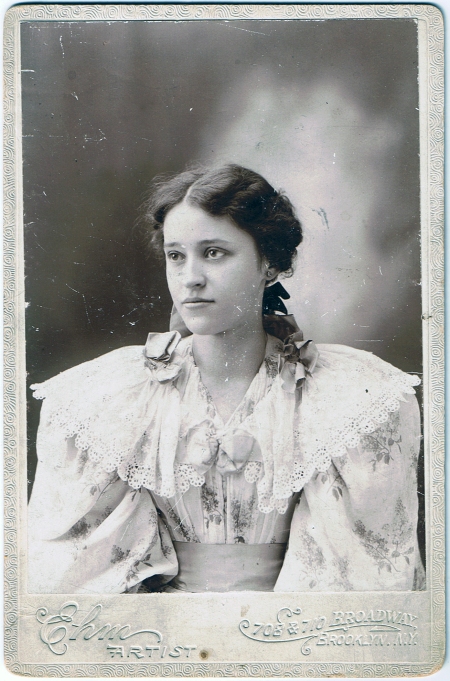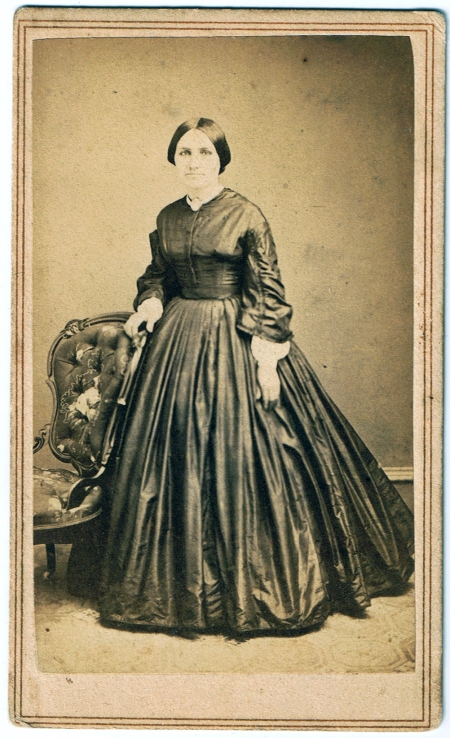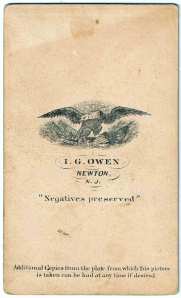
Cabinet Card: Young Woman from Brooklyn, 1890s
Backmark: None (Front reads “Ehm Artist 708 & 710 Broadway, Brooklyn, N.Y.)
Date: c. 1892-1896
Subject: Portrait Bust of a Young Woman
Location: Brooklyn, N.Y.
Dress: This is a beautiful example of the popular dress style c. 1895. The dress is made of a light figured cotton or silk printed with floral sprays. The sleeves are very full, with the fullness extending past the elbows. The sleeves may be held out with separate sleeves filled with down or shaped by whalebones, or they may be puffed with pleatings of crinoline. The extra-wide collar of eyelet embroidery extends to the end of the shoulder point and is typical of the mid 1890s.
The bodice is drawn tightly into a waistband at the true waistline and covered with a wide ribbon belt. This bodice shape is particular to the early-to-mid 1890s.
Ribbon bows draw attention to the shoulders and the center-front neck.
Hair: This young woman still wears her hair in an adolescent style; slightly curled at the sides and center-parted as was typical of an adult style, but drawn back into a low ponytail tied with a ribbon. Adult women would have confined their hair in a bun at the back of the head.








